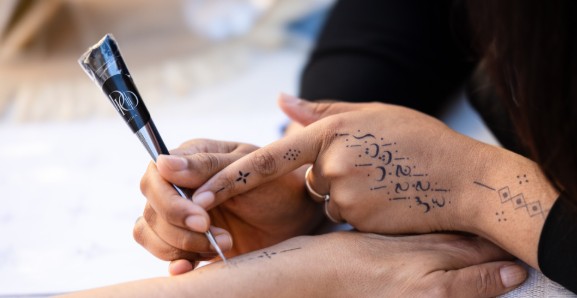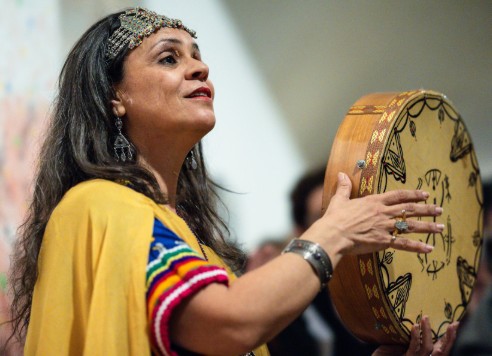Tattoo: The History of an Art, a Seductive Technique, a Form of Care, and a Symbol of Humanity
An art form older than writing, tattooing is the living archive of humanity — a language inscribed on skin that tells stories of identity, care, and seduction. Tatouage. Histoires de la Méditerranée, at Marseille’s Centre de la Vieille Charité (17 May – 28 September 2025), explores this ancient practice from its archaeological origins to its contemporary cultural and political resonance, revealing the tattoo as both a timeless work of art and an intimate act of selfhood.
INTERNATIONAL FAIRS & EXHIBITION
Charlotte Madeleine CASTELLI
8/11/20253 min read


Some artworks live on walls; others dwell in glass cases. But there is a rarer category of creation that refuses such confinement — works that live, breathe, and age with their maker, recording every heartbeat, every season of life, on the living surface of skin. Tattooing belongs to this intimate and nomadic order of art. It is inseparable from the body that hosts it, yet its resonance can travel across centuries and geographies. It is the oldest known mobile archive of humanity: an epidermal language predating the written word, born when the body itself was the primary and most truthful medium for narrating one’s existence and mapping the world’s beliefs, fears, and desires.
The exhibition “Tatouage. Histoires de la Méditerranée” unfolds this long and complex history with the precision of a historian and the sensibility of a poet. Within the vaulted halls of Marseille’s Centre de la Vieille Charité, the tattoo is examined not as a marginal or folkloric curiosity, but as a central cultural and political technology — one that acts as an instrument of care, a vehicle of seduction, and a bridge between individual biography and collective memory. The curatorial journey, devised by Nicolas Misery, moves in a carefully balanced rhythm between chronological and thematic groupings, guiding visitors through a dialogue between archaeology, anthropology, fine art, and contemporary visual culture. From ancient tools and ritual artefacts to maritime relics, from modernist paintings to contemporary photography and fashion, each work contributes to an intricate cartography of the tattoo as both art and anthropology.
Marseille, with its centuries-old port and history of migration, emerges in this context as more than a backdrop. The city becomes a protagonist — a living workshop where tattoo traditions have been reimagined in contact with maritime lore, religious iconography, emblems of solidarity, and the raw energy of urban street culture. Historical materials find their counterpoint in works by Choukri Mesli, Samta Benyahia, Farid Belkahia, Lalla Essaydi, El Meya, and Ahmed Cherkaoui, whose designs translate the language of the skin into new artistic alphabets. The commissioned site-specific piece by Denis Martinez, co-founder of the Aouchem group in the 1960s, makes the connection explicit: tattooing is revealed as both political grammar and aesthetic innovation, a form capable of carrying resistance and beauty in the same breath.
The scope of the project is amplified through collaborations with leading institutions, including the musée du quai Branly – Jacques Chirac, and through exceptional loans from the Louvre, the Musée d’Orsay, the CNAP, and a network of museums across the Mediterranean and Europe — from Rome’s Villa Giulia to the Rijksmuseum van Oudheden in Leiden, from Munich’s Glyptothek to Madrid’s Museo Arqueológico Nacional. This network of exchanges mirrors the very nature of the tattoo as a cultural traveller, absorbing and reshaping motifs across time and place.
In this context, the tattoo emerges as more than a surface decoration. It is a compact biography, a vow, a shield, a confession. It is a form of self-writing that refuses to remain static, changing with the wearer’s life and circumstances. Brought into the museum, the tattoo does not become a relic: it continues to vibrate with the warmth of the skin it inhabits, with the memory of the gesture that made it, and with the centuries of shared human experience it silently carries.
Ultimately, “Tatouage. Histoires de la Méditerranée” is not an attempt to domesticate tattooing within the traditional canon of art history. Rather, it uses tattooing as a lens to test the flexibility of that canon, to stretch it toward a Mediterranean understood not as a border but as a shared, porous space of exchange. It is here that the tattoo reveals its full nature — as seduction, as care, and as humanity distilled into a mark that speaks across faiths, epochs, and geographies. This is art that cannot be collected, only encountered, in the breath and gaze of those who bear it.
Tatouage. Histoires de la Méditerranée
Centre de la Vieille Charité, Marseille | until 28 September 2025
© Charlotte Madeleine Castelli | All rights reserved


